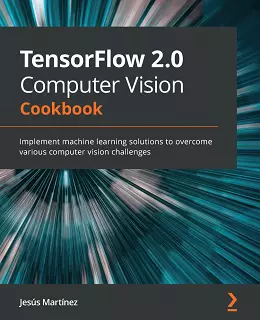TensorFlow 2.0 Computer Vision Cookbook

eBook Details:
- Paperback: 542 pages
- Publisher: WOW! eBook (February 26, 2021)
- Language: English
- ISBN-10: 183882913X
- ISBN-13: 978-1838829131
eBook Description:
TensorFlow 2.0 Computer Vision Cookbook: Get well versed with state-of-the-art techniques to tailor training processes and boost the performance of computer vision models using machine learning and deep learning techniques
Computer vision is a scientific field that enables machines to identify and process digital images and videos. This book focuses on independent recipes to help you perform various computer vision tasks using TensorFlow.
The book begins by taking you through the basics of deep learning for computer vision, along with covering TensorFlow 2.x’s key features, such as the Keras and tf.data.Dataset APIs. You’ll then learn about the ins and outs of common computer vision tasks, such as image classification, transfer learning, image enhancing and styling, and object detection. The book also covers autoencoders in domains such as inverse image search indexes and image denoising, while offering insights into various architectures used in the recipes, such as convolutional neural networks (CNNs), region-based CNNs (R-CNNs), VGGNet, and You Only Look Once (YOLO).
Moving on, you’ll discover tips and tricks to solve any problems faced while building various computer vision applications. Finally, you’ll delve into more advanced topics such as Generative Adversarial Networks (GANs), video processing, and AutoML, concluding with a section focused on techniques to help you boost the performance of your networks.
- Understand how to detect objects using state-of-the-art models such as YOLOv3
- Use AutoML to predict gender and age from images
- Segment images using different approaches such as FCNs and generative models
- Learn how to improve your network’s performance using rank-N accuracy, label smoothing, and test time augmentation
- Enable machines to recognize people’s emotions in videos and real-time streams
- Access and reuse advanced TensorFlow Hub models to perform image classification and object detection
- Generate captions for images using CNNs and RNNs
By the end of this TensorFlow 2.0 Computer Vision Cookbook book, you’ll be able to confidently tackle a wide range of computer vision problems using TensorFlow 2.x.